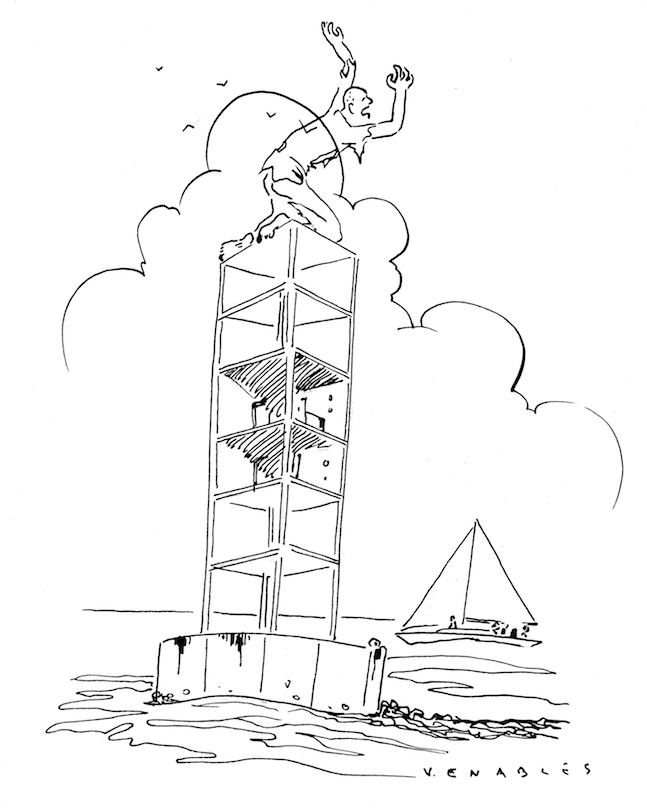Trevor David Clifton on a tall story that became historical fact
From our Instructor’s Tales series
Eight pretty ladies stepped aboard, my crew for the day. It was the first day of the autumn regatta and the vice-commodore had asked me to take spectators out to watch the racing.
It was sun-hat weather. A light breeze blew from the west, giving us a beam-reach there, and back I hoped. Perfect.
The racers, up ahead, were already manoeuvring for position as they headed towards open water and the start line.
We followed, keeping just outside of the main channel, leaving the line of green buoys to starboard. A gentle swell rolled in from the north.
The girls were chattering and occasionally listening to me when I pointed out items of interest.
They all stopped talking as we passed the No 1 buoy.
If you’ve never heard a whistle buoy before you’d probably stop talking too.
An eerie groan, loud – as it’s meant to be – drifted across the water.
“What on earth is that?” one of my ladies asked.
“Ah,” I began, only to be interrupted.
“And why does it make that dreadful noise?”
I tried again.
“Well, many, many years ago, in the days of sailing ships, there was a small, rocky island where that buoy is now. It was used as a penal colony, where sailors who had fallen foul of the navy’s strict disciplinary regulations were cast ashore…”
I looked around. I’d expected the response to be laughter, or at least doubtful inquisition, but no, the girls were all looking at me seriously, waiting for me to continue.
I couldn’t think of a way to close the story quickly without making it look weak – or me look stupid, so I carried on: “… without food or protective clothing and very little water. Many died.
“One morning a ship-of-the-line was making towards the harbour, almost drifting in the little flurries of wind that were spreading sea mist across the water.
“A lookout in the bow of the ship heard a mournful cry from dead ahead. The captain managed to alter course and steer safely past the island.
“As soon as the ship was anchored he hurried ashore, determined to reward the man who had saved his ship. He hired a carriage and made haste to a little fishing village further along the coast. There he engaged a fisherman to row him out to the island.
“Sadly, by the time he got there, the man had died.
“Many years later, after marine engineers had blasted that rocky danger to navigation into oblivion, it was replaced by a green buoy. The buoy’s sound signal was made to imitate, as near as possible, the cry of the man who had saved a battleship.”
Silence.
The sudden crack of the starting gun came from the committee boat. The first race had started. Heads turned to watch, binoculars were passed around, and my tale was forgotten.
A year went by and then, in August, the same vice-commodore asked me once more to take spectators out to watch the racing.
My crew, all ladies again, but none who had been before, stepped aboard. We cast off and headed out to sea.
The mournful sound from the number one green buoy cut into the conversations in the cockpit as we approached.
“Golly,” said one of the girls, “What an awful noise! Why does it do that?”
I opened my mouth but before I could get a word out one of the other girls answered.
“There used to be a penal colony on an island there,” she said, “the sound is in honour of a sailor who saved a battleship…”
I looked around. I’d expected the response to be laughter, or at least doubtful inquisition,
but no, the girls were all looking at me seriously, waiting for me to continue
Do you know an instructor with a tale to tell? We’d love to publish it! Please contact us via editor@classicsailor.com or telephone 01273 420730
This article appeared in the August-September 2017 issue of Classic Sailor


